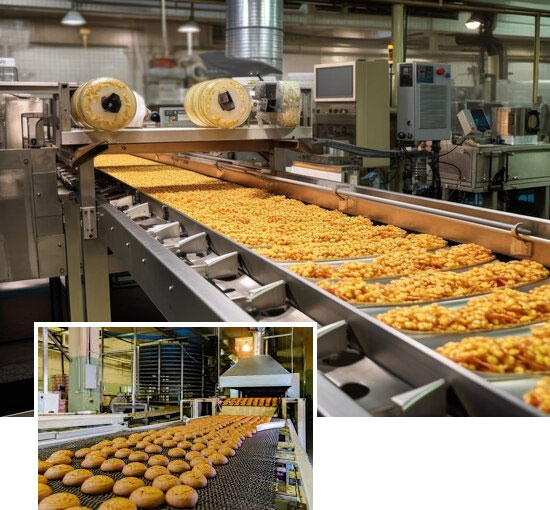Food Processing
Fumigation in food processing is a method used to control pests, bacteria, mold, or other contaminants that could affect the quality and safety of food products. It involves the use of gaseous chemicals, or fumigants, to sanitize or disinfect the food and its storage environment.

Fumigation for Food Processing Machinery
Fumigation for food processing machinery involves the use of fumigants to disinfect and sanitize equipment used in food manufacturing. This process ensures that machinery is free of pests, microorganisms, and other contaminants that might compromise food safety or product quality. The fumigation process for machinery is often part of a broader cleaning and pest control program in food facilities.
Purpose of Fumigation for Machinery:
- Pest Control: Fumigation helps eliminate pests like rodents, insects, or mites that could infest equipment or food products during processing.
- Microbial Contamination: It helps reduce the presence of bacteria, mold, fungi, and viruses that may reside on the surfaces of the machinery.
- Prevent Cross-Contamination: Fumigation ensures that allergens, foreign particles, or other contaminating agents from machinery do not affect the food being processed.
Fumigation for Food processing Units
Pest management in food processing units is a crucial aspect of maintaining hygiene, ensuring food safety, and preventing contamination. Effective pest control is not only necessary to protect the quality of food products but also to comply with health and safety regulations. A comprehensive pest management program involves various strategies that aim to monitor, prevent, and control pest populations.
Integrated Pest Management (IPM):
IPM is a comprehensive approach that combines multiple pest control methods in a way that minimizes risk to food safety, human health, and the environment. It includes:
- Prevention: Preventing pest entry and reducing factors that attract pests.
- Monitoring: Regular inspection and surveillance to detect pest activity early.
- Control Methods: Using physical, biological, and chemical controls as needed.
- Record-Keeping: Maintaining detailed records of pest sightings, treatments, and monitoring activities for compliance and quality control.
Rodent control
Rodent Control is a critical element of maintaining a safe, hygienic food processing environment. Implementing a robust prevention program, monitoring rodent activity, and using effective control methods like traps, rodenticides, and sealing entry points are key to minimizing the risk of infestations. By integrating rodent control into your food safety management system, you can protect both the quality of your food products and the health of your consumers.
